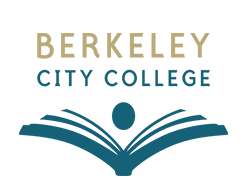Berkeley City College’s ASL Program enables you to acquire the communicative competence in ASL and the cultural sensitivity needed to interact successfully with members of the American Deaf community.
ASL Facts:
-
ASL is a language capable of expressing any abstract idea by utilizing space and movement to convey meaning.
-
ASL is used by most Deaf people in Canada and the United States.
-
The role of facial expressions, head movements, and eye gaze in ASL is grammatical.
-
While watching another person sign, it is appropriate to focus on the signer’s face.
-
Among ASL signers, finger spelling is mainly used for names of people, places, and specific brand names.
-
ASL makes use of space in front of a signer’s body to convey distance, express time concepts, and contrast two people, places, things, or ideas.
-
Speech and lip-reading are the least effective communication strategy between Deaf and hearing people.
Deaf History Timeline:
-
1817 – First American school for the Deaf founded.
-
1860 – California School for the Deaf founded.
-
1864 – Gallaudet College Opens.
- 1980s – early 1990s – ASL is the third most spoken language in the US.
- 1980-81 – ASL Program was designed/researched. .Approved as program of study in 1982.
- 1982-1985 – Signing Naturally curriculum developed with help from federal grant from Dept. of Education.
- 1984 – Creation of ASL curriculum at Vista College (now Berkeley City College).
- 1988 – Production of Signing Naturally, a series of textbooks and videotapes for ASL.
- 1988 – “Deaf President Now” Protest held at Gallaudet College.
( Deaf Culture Notes Borrowed from Signing Naturally Published by Dawn Sign Press)
Students who will benefit from this program include the following: those who wish to expand their language skills and cultural knowledge to enhance other majors (e.g., interpreting, education, social work, and psychology); those who need to fulfill a university foreign language requirement; parents of deaf children; and deafened adults. Students will develop skills which will also make them more marketable to potential employers who encounter the Deaf.

 Canvas
Canvas
 Donate
Donate
 Let's Talk!
Let's Talk!

